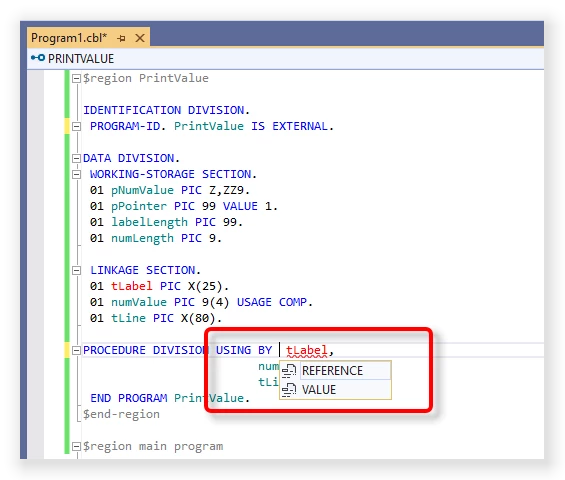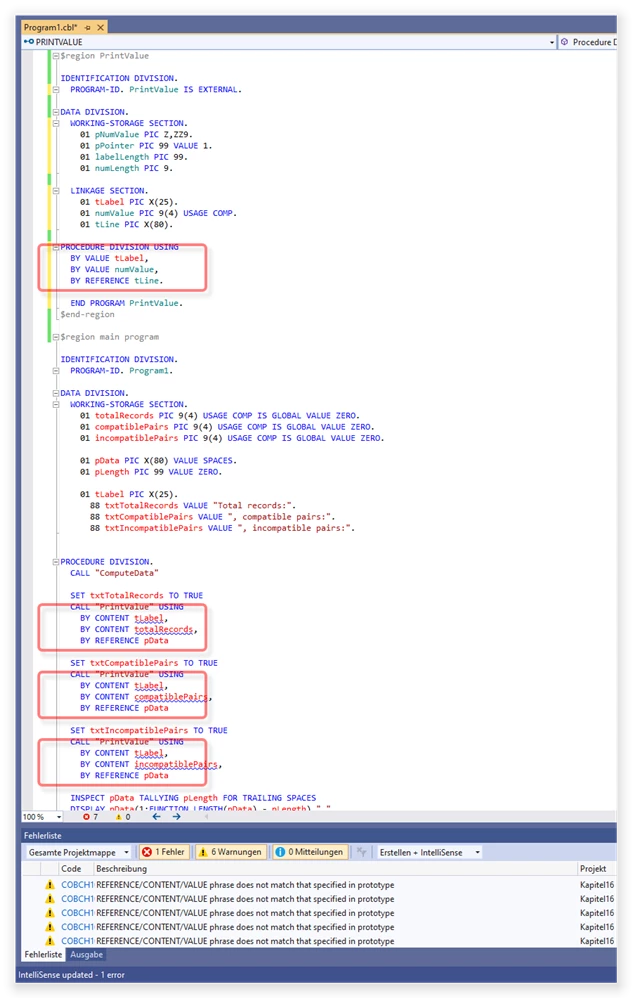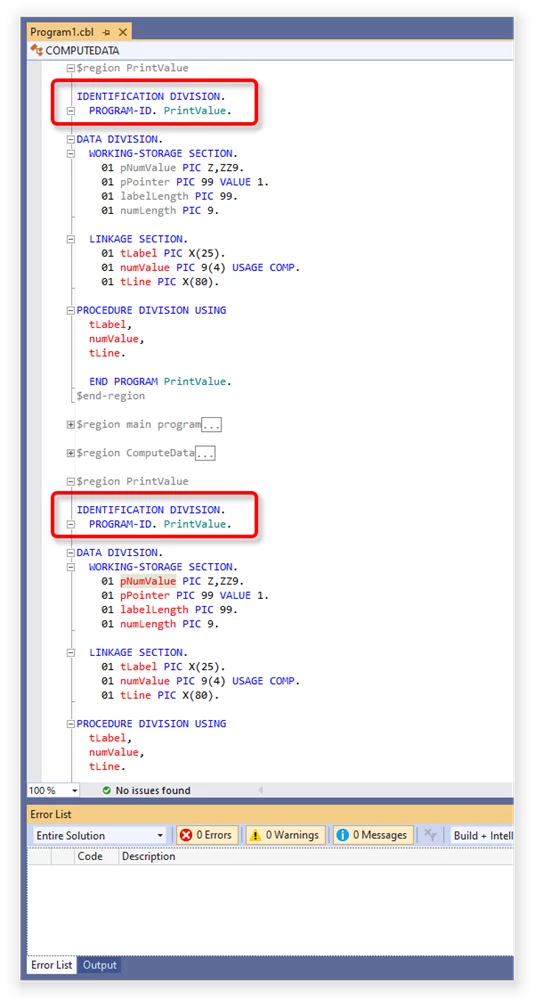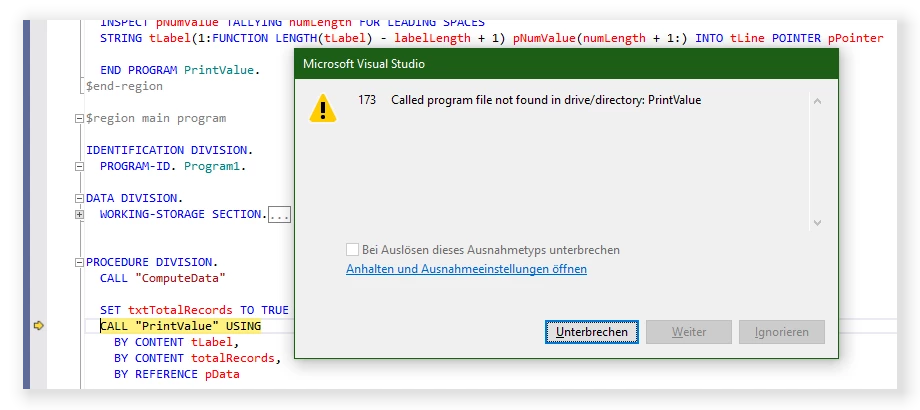From this Micro Focus documentation on CALL prototypes I believe to have learned that I can write program prototypes (just like in a C/C header file) and use them to have Visual COBOL validate my CALL parameters. As far as I understood, a program prototype is created by appending the IS EXTERNAL qualifier to the prototype's Program-Id.
Yet, I don't seem to be able to correctly describe my program parameters. The JIT compiler is always complaining (see error messages in the screenshot below).
The error messages I get don't give hints on what to do in order to solve the problem, so they are leaving me in a dead-end situation.
What am I doing wrong?
Your answers are highly appreciated.
Please find my sample project in the ZIP file attached.
And below is a screenshot depicting the main source file (containing the prototype, the corresponding contained subprogram, and the main program).














